In an age where screens often dominate family time, hands-on science projects offer a refreshing and enriching way to engage children, spark curiosity, and strengthen the parent-child bond. Whether you're a parent, guardian, or teacher looking to nurture a young mind, science projects are a fantastic way to make learning fun and memorable.
From colorful chemical reactions to simple physics experiments, many fascinating projects can be done using household items, making them both affordable and accessible.
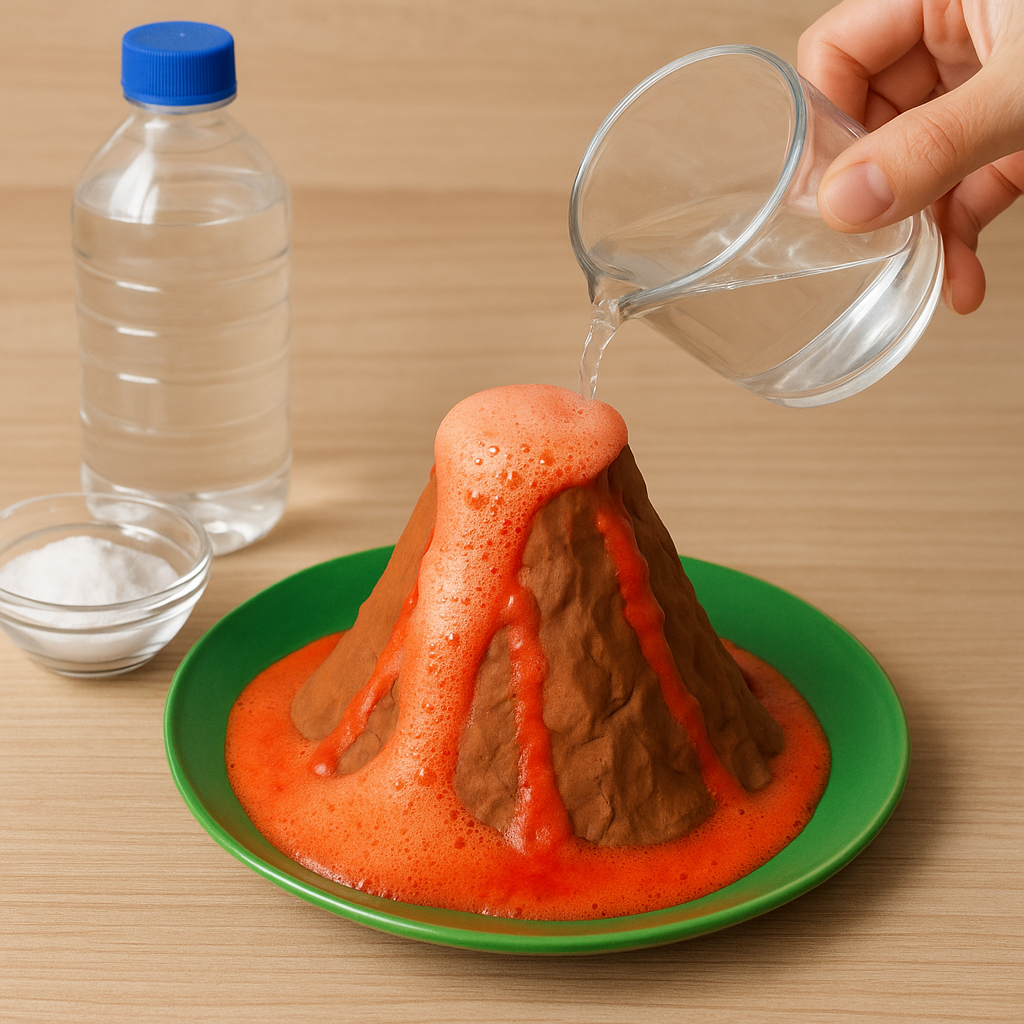
1. Volcano Eruption with Baking Soda and Vinegar
A classic favorite among kids, this simple chemistry experiment demonstrates an acid-base reaction with exciting fizz and foam.
What You Need:
- Baking soda
- Vinegar
- Dish soap
- Red food coloring (optional)
- A container (plastic cup or a clay volcano model)
The Science:
When baking soda (a base) reacts with vinegar (an acid), it produces carbon dioxide gas—causing the bubbly eruption.
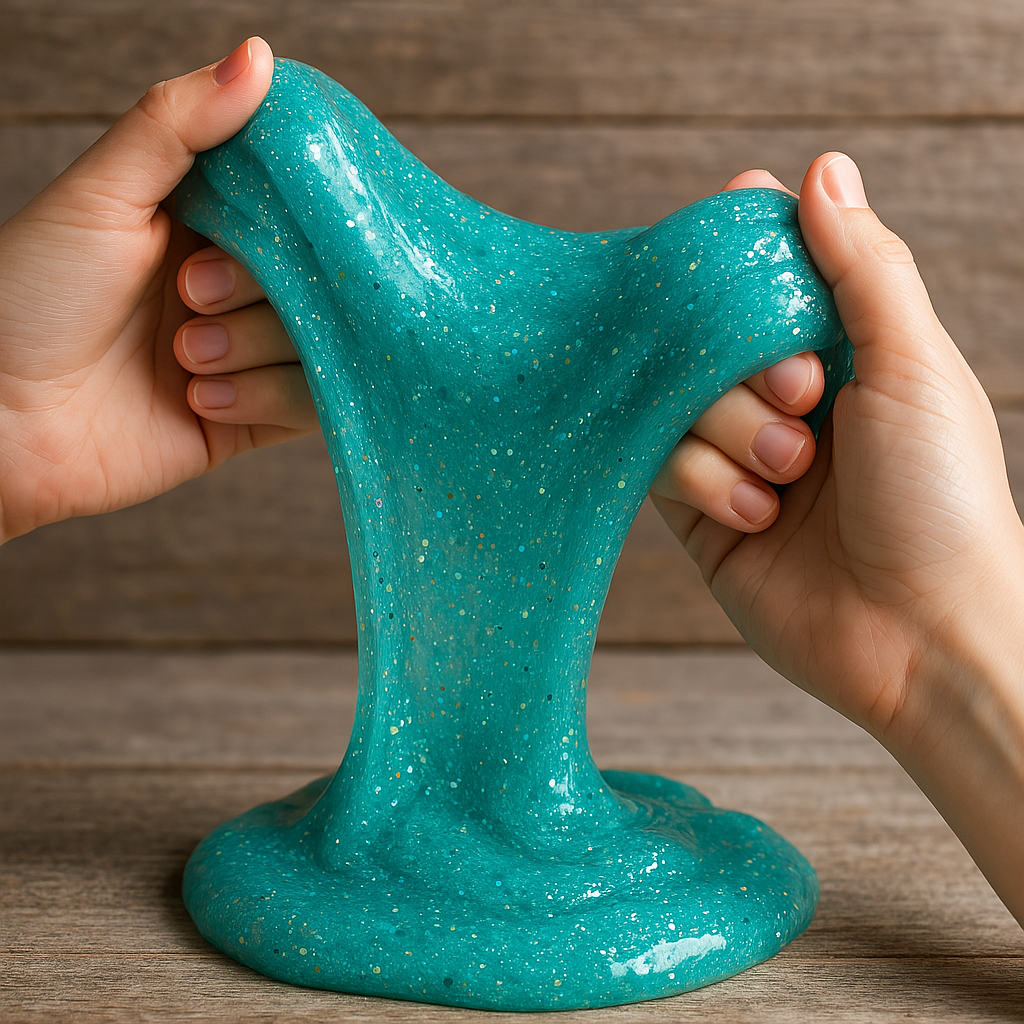
2. Homemade Slime
Get messy while learning about polymers with this gooey and endlessly entertaining activity.
What You Need:
- White school glue
- Baking soda
- Contact lens solution
- Food coloring or glitter (optional)
The Science:
Slime forms when the glue's polymer molecules link together in the presence of the activator (the contact solution), creating a new, flexible substance.
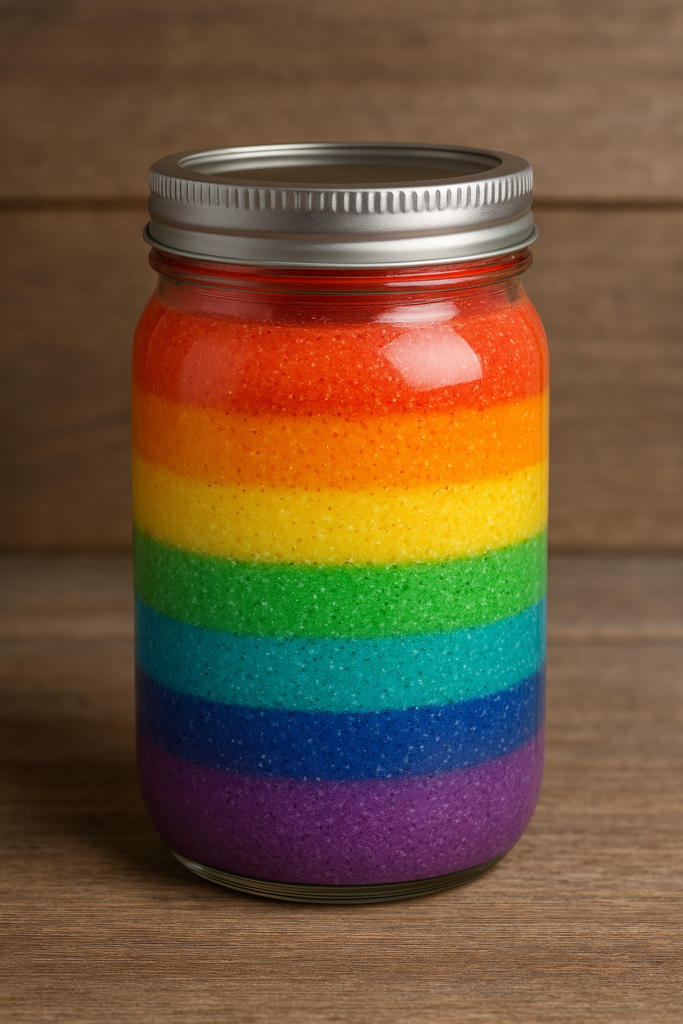
3. Rainbow in a Jar
This project teaches about density and gives kids a visually stunning outcome.
What You Need:
- Sugar
- Water
- Food coloring
- Clear cups or jars
- Spoon or dropper
The Science:
Different sugar concentrations change the water’s density. Carefully layering these solutions creates a rainbow effect without mixing.
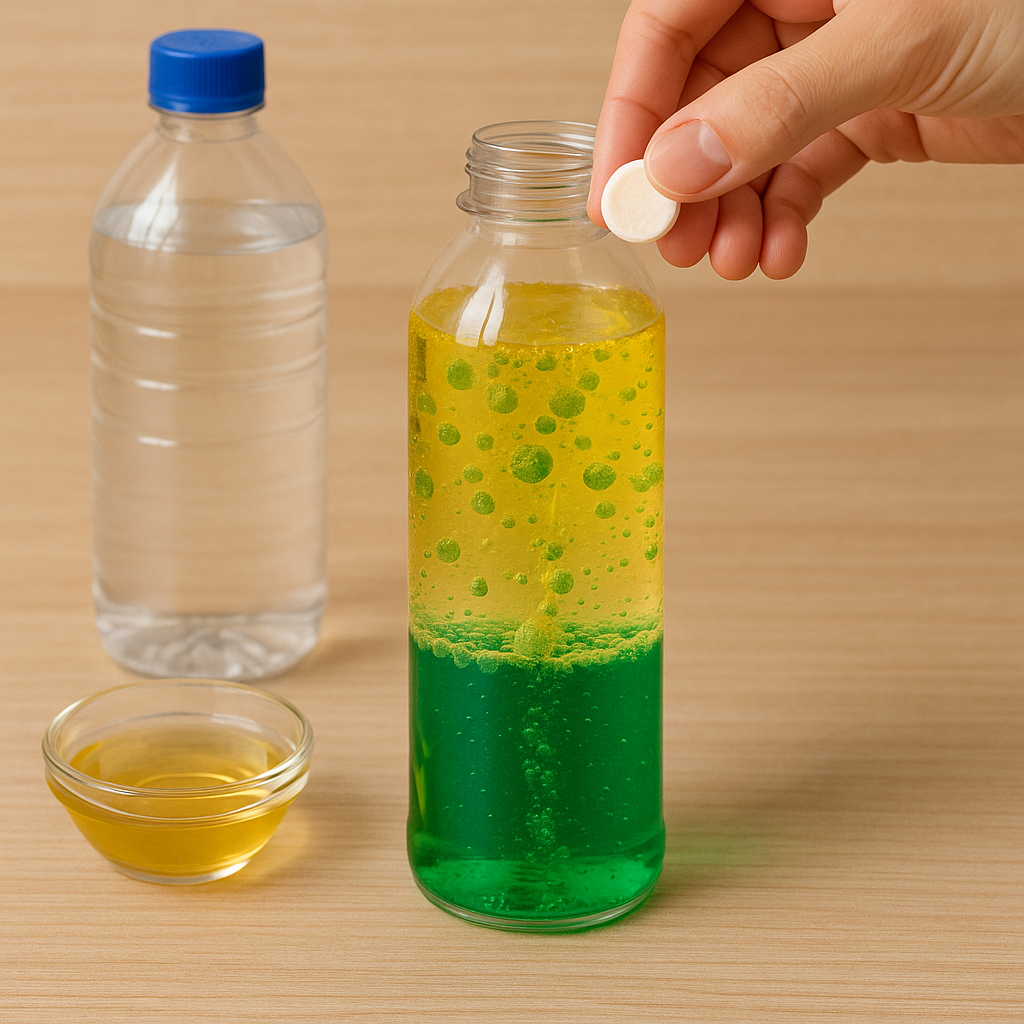
4. Lava Lamp Experiment
Kids can create a colorful, bubbling lava lamp effect while learning about oil and water properties.
What You Need:
- A clear bottle or jar
- Water
- Vegetable oil
- Food coloring
- Alka-Seltzer tablet
The Science:
Oil and water don’t mix due to density differences. When the Alka-Seltzer reacts in water, it releases gas bubbles that carry the color through the oil layer.

5. Static Electricity with Balloons
This fun physics experiment demonstrates the invisible force of static electricity.
What You Need:
- Balloons
- Wool sweater or hair
- Small paper bits
The Science:
Rubbing the balloon transfers electrons and builds static charge. The charged balloon attracts lightweight objects like paper or makes hair stand on end.
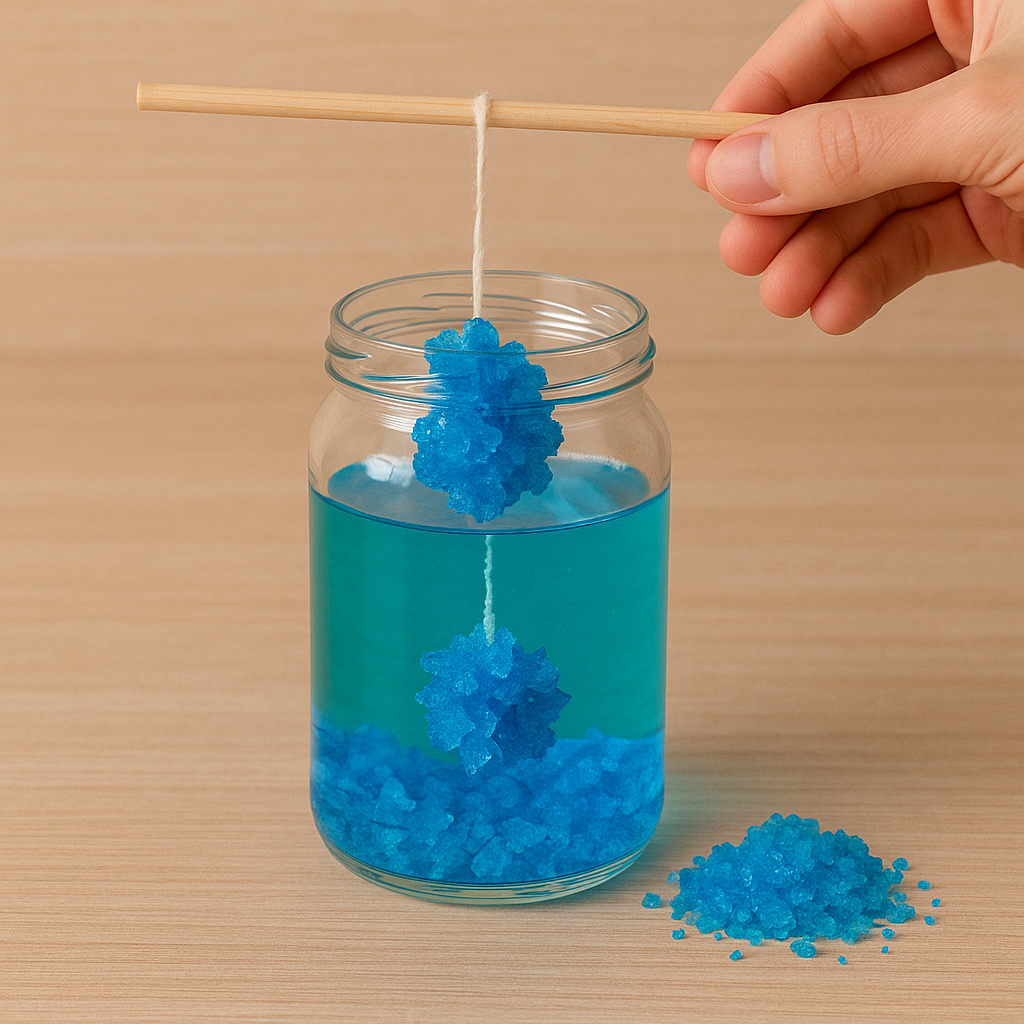
6. Grow Your Own Crystals
A beautiful experiment that teaches kids about solutions and crystal formation over time.
What You Need:
- Borax or salt
- Hot water
- Pipe cleaners or string
- Jar or cup
The Science:
As water evaporates, dissolved substances like salt or borax crystallize on surfaces, mimicking how real-world crystals form.
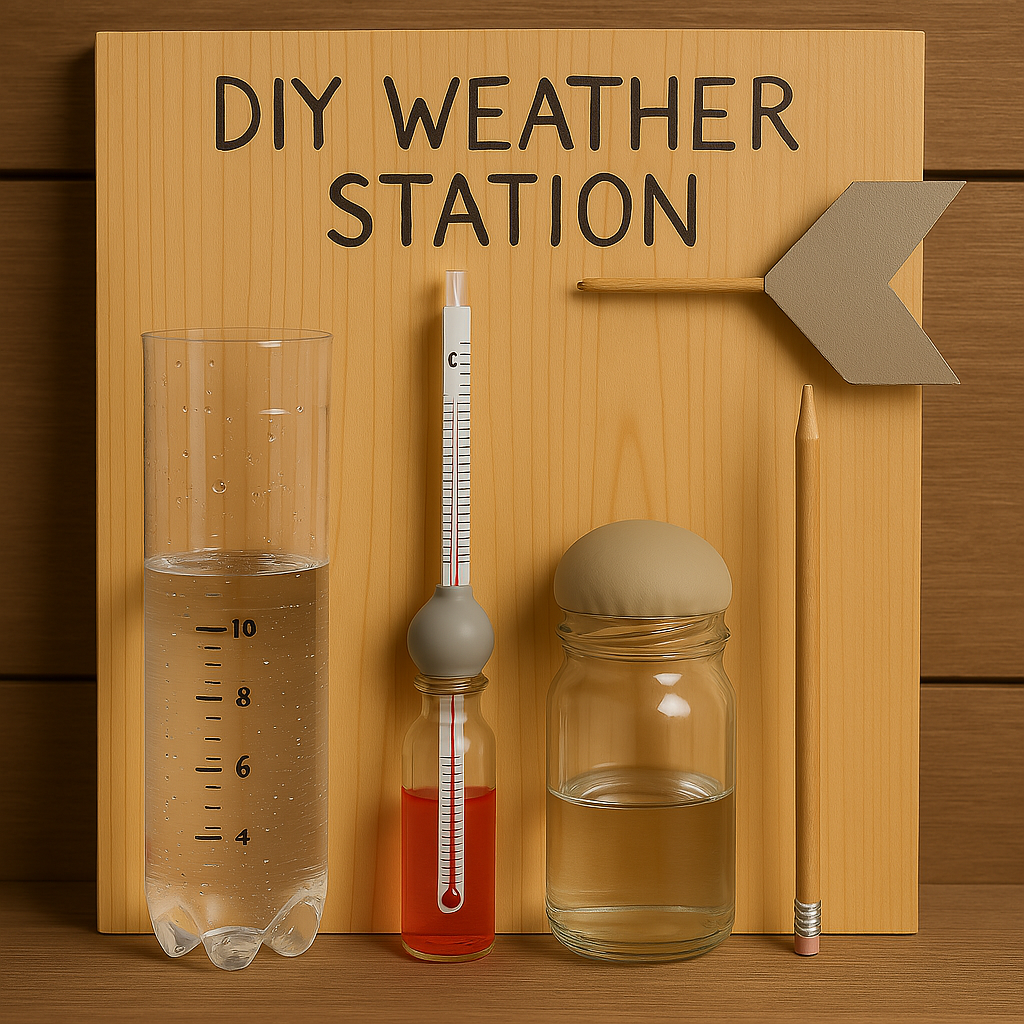
7. DIY Weather Station
Introduce kids to meteorology by building simple tools to track weather conditions.
What You Can Build:
- A rain gauge (using a cut plastic bottle)
- A thermometer (alcohol and food coloring in a straw)
- A barometer (balloon over a jar)
- A wind vane (cardboard and pencil)
The Science:
These tools help kids observe and record real environmental data, encouraging scientific thinking and observation skills.
Why These Projects Matter
According to child development experts, hands-on activities like these help kids:
- Understand scientific concepts through real-world application
- Develop problem-solving and critical thinking skills
- Strengthen their creativity and patience
- Build confidence through experimentation and discovery
Tips for Parents
- Always supervise experiments, especially those involving heat or chemicals.
- Encourage your child to ask questions and make predictions.
- Let them take the lead—mistakes are part of learning.
- Keep a journal or notebook to record observations and results.
Whether it's a rainy day or a weekend without plans, turning your kitchen into a science lab can be one of the most rewarding experiences you share with your child. Who knows? You might even ignite the passion of a future scientist.
4o